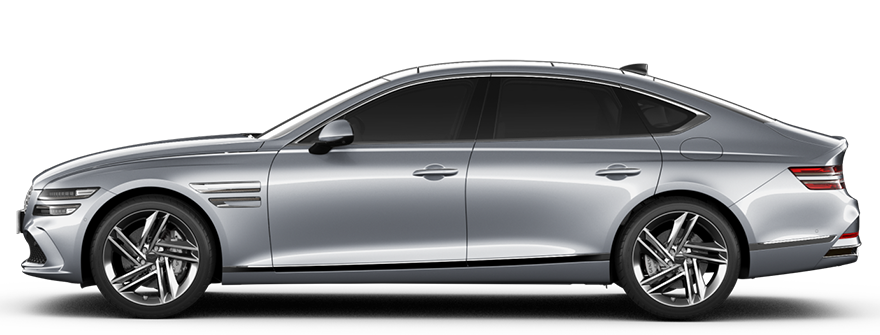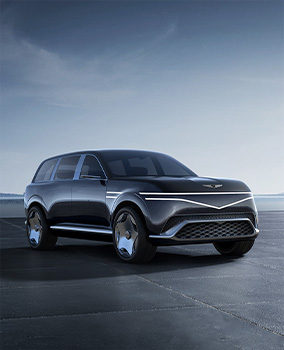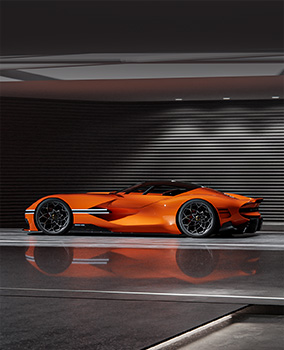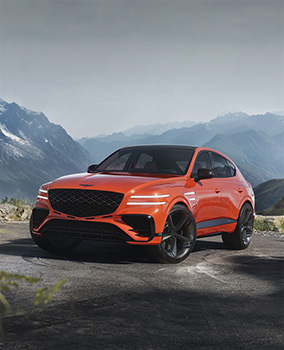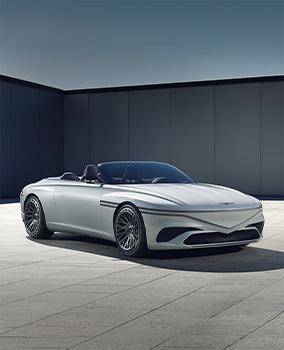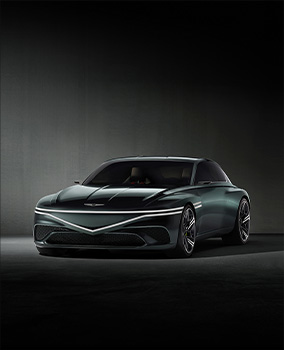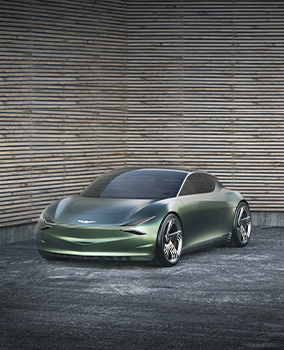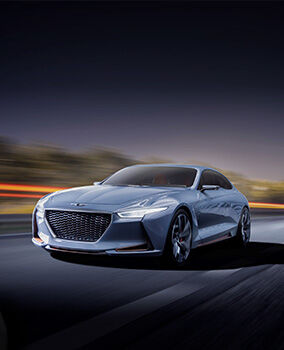-
Models
-
ElectrifiedGV70 EV

-
GV80 Coupe

-
ElectrifiedG80

-
ElectrifiedGV70 EV

-
GV80 Coupe

-
ElectrifiedG80

-
Shopping
Shopping
Everything you need to get your hands-on Genesis experience.
Find your Genesis and discover the best offers.
-
Genesis
Genesis
We strive to create the finest automobiles and related products and services for connoisseurs around the world.
A beauty of innovation visualized by design.
-
Owners
Owners
Everything you need to get your hands-on Genesis experience.
We are here to help.
{{name}}
{{addr}}
Set your location to display nearest
retail outlets and get accurate prices.
retail outlets and get accurate prices.
USE LOCATION INFORMATION
GENESIS DEBUTS NEW CONCEPT CAR, GENESIS X SPEEDIUM COUPE IN NEW YORK
14.04.2022

- • The Genesis X Speedium Coupe made its debut at Genesis House in New York on Wednesday, 13 April. The concept car previews what prospective owners of Genesis can expect from Genesis’ next wave of electric vehicles
- • The newly unveiled concept reflects Genesis’ principle of reductive design
- • Genesis’ wings and Two Lines prominent in the design, while an hourglass silhouette gives the car its muscular presence
- • Genesis announced plans to manufacture the Electric model of GV70 in the U.S.
14 APRIL, 2022 - Genesis premiered the Genesis X Speedium Coupe on 13 April at Genesis House, a cultural space located in the heart of New York City’s Meatpacking District. The concept car incorporates Genesis’ DNA (Audacious, Progressive, Distinctly Korean), while looking ahead to the next wave of EVs, highlighting Genesis’ future as a true luxury electric vehicle brand.
Envisioning a new styling convention for the future
The Genesis X Speedium Coupe was born out of a “freestyle” design exercise based on the Genesis X Concept led by the 2022 World Car Person of the Year, Genesis Chief Creative Officer Luc Donckerwolke. It inherits the timeless Genesis’ design philosophy, “Athletic Elegance,” in an even more progressive way.

The name Speedium was inspired by the passion for motorsports felt by Genesis designers at the Korean racetrack. The name also encapsulates Genesis’ belief that the emotional value of driving will remain strong in the era of electrification. The addition of the word “coupe” further accentuates the enjoyment of driving through aesthetic designs.
Genesis followed the principle of reductive design, or “less is more,” for the concept car. The Genesis X Speedium Coupe stands out for its restrained elegance, clean lines, and subtle curves.
X Speedium Coupe challenges the status quo of a defined car type. It is not a conventional concept car that previews plans for the production line-up.
“This car is an open-door moment in Genesis’ journey towards our future EV design,” said Luc Donckerwolke, Chief Creative Officer of Genesis. “This isn’t a show car - it’s a look into our design processes as we explore ideas for the next wave of EVs, one that incorporates Genesis’ DNA.”
On the front of the vehicle, Genesis’ signature Two Lines lamps have evolved into a full-width element that encompasses the shape of the crest resembling the Genesis Crest Grille. It was designed to carry the brand signature of the wing face for the electrification era by integrating the daytime running lamps with the low beam and high beam together. It carries an EV face that symbolises Genesis’ transformation towards becoming an all-electric car brand with a six-model line-up by 2030.
From an overhead perspective, the hourglass silhouette highlights the car’s passion and character. The curvaceous and sensuous form accentuates the wheel arches creating muscular presence.
Viewed from the side, the Parabolic Line extending from the front to the rear of the car maintains a certain tension in the design as a classic car would. The deliberate “anti-wedge” design culminates in a streamlined look that exudes understated elegance.
Meanwhile, an elliptical tail balances out the look for a visually engaging tension between convex and concave surfaces in the rear. The V-shaped brake lights interrupt the circular shape by producing the striking contrast that is one of the hallmarks of a Genesis vehicle.
“We are giving each design element space to breathe,” said Donckerwolke. “It’s not about making the design elements compete with each other, but about orchestrating the elements so that they complement and respect one another.”
Looking ahead to electrification in the U.S.
Genesis has experienced significant growth in the U.S. market, achieving monthly sales records for the past 16 consecutive months as of March 2022. The brand recorded over 11,700 car sales in the first quarter of 2022, the largest quarterly sales achievement since its foray into the U.S. market in 2016.
To build on its success, Genesis plans its first EV production, and begin sales push, within the U.S. market.
Genesis announced that the Electrified GV70 will be its first vehicle produced in the U.S. at its manufacturing facility in Montgomery, Alabama. The GV70 is poised to set the new standard for luxury electric SUVs. Production is scheduled to begin in December this year with the goal of strengthening Genesis’ EV market position and continuing its commitment to electrification.
About Genesis House
Genesis House opened in November 2021 as the brand’s home in the U.S. Measuring 4,340 square meters and consisting of three floors, it carries forward the bold and innovative spirit of the brand by welcoming guests in a gracious manner that is deeply rooted in Korean culture.
The basement, Cellar Stage is located in the basement outfitted with floor-to-ceiling LED-lit staging and state-of-the art audio-visual technology. Genesis holds numerous events held in collaboration with various artists and the local community.
The first floor is an exhibition space where guests can experience all Genesis line-up, both the existing models and the concept cars that express the brand’s future vision. The architects used tessellated mirrors to beautifully set off the cars on display, and a curator is on hand to provide detailed explanations. The curator’s service at Genesis House is provided in English, Spanish, French, Chinese, Korean and other languages.
On the second floor, guests can enjoy a Korean cultural experience in the Library, the Tea Pavilion, Genesis House Restaurant and the Terrace Garden.
Genesis House Restaurant, established in collaboration with Onjium - a Michelin-starred restaurant and traditional cultural research center in Seoul - offers a creative and elegant gastronomic experience that harks back to the Korean Noble class cuisine that took inspirations from what Joseon-era royalty once enjoyed in their palaces.
The 882-square-meter Terrace Garden, located outside on the second floor, overlooks the High Line, Whitney Museum of American Art, Hudson River and the little island. Reminiscent of a courtyard outside a “hanok,” or Korean traditional house, it is surrounded by low walls and an alley, serving as a cozy spot to enjoy a cup of coffee or tea.
Contact Information
Genesis Motors Australia
pr@genesis.com
1800 90 80 70











.png)
